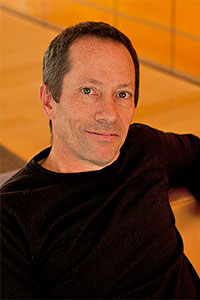In the race to develop technologies to slow climate change, the world is off track.
That's the latest assessment from the International Energy Agency, which presented a bleak outlook ahead of the planned climate summit meeting in Paris this December, where countries rich and poor are hoping to agree on a strategy to slow global warming.
Even under the more optimistic assessments of humanity's technological capabilities, limiting the atmosphere's warming to 2C above the average in the preindustrial era — considered by many scientists to be a tipping point toward climatic upheaval — seems to be slipping out of reach.
"For the first time since the IEA started monitoring clean energy progress, not one of the technology fields tracked is meeting its objectives," Maria van der Hoeven, the agency's executive director, wrote in a foreword to the report. "Our ability to deliver a future in which temperatures rise modestly is at risk of being jeopardised."
Deployment of renewable energy is progressing, but not fast enough. Nuclear power is behind the curve. Key technologies such as carbon capture and storage, which the Intergovernmental Panel on Climate Change has deemed critical to staying within the target, are still in their infancy.
The only commercial scale coal-fired power plant equipped with carbon dioxide capture technology opened last October in Canada. In the absence of a carbon price that might make removing carbon dioxide from the air a worthwhile investment, inventors in the United States hope they might make a profit by turning carbon dioxide into baking soda.
Perhaps most critically, the world's collective effort to reshape energy infrastructure seems to be losing steam. In 2014, global investments in renewable energy declined for the fourth year in a row, to less than US$250 billion (8.7 trillion baht).
The United States, the most technologically proficient nation on earth, could be expected to take the lead in developing new energy alternatives. It isn't.
Awash in cheap energy from shale oil and gas — the product of a surge in federally funded research decades ago — America has lost sight of the goal: Decarbonising the world's energy supply within a matter of decades.
Consider the sun. The world has made huge leaps in solar technology. The price of solar panels has fallen sharply — mostly because of significant Chinese investment in panel manufacturing. Smart grid technologies have enabled owners of solar homes to buy power from the grid when the sun is down and sell it back when it is shining, and new business models have encouraged a boom in residential solar installations. In some parts of the country, solar energy has become competitive with conventional power from fossil sources.
Yet solar energy today accounts for only about 1% of the world's power. To keep up with rising demand for electricity, solar energy might have to supply 27% of electric power by 2050, according to one model by the International Energy Agency that assumes nuclear power will be constrained by high costs and public opposition.
A recent report from researchers at the Massachusetts Institute of Technology, highlighted the challenge.
To provide a big share of the world's energy, the MIT researchers wrote, solar power must overcome three big obstacles: It is still more expensive than fossil fuels; it is tiny relative to the scale it will need to play a major role in the global energy system; and it is intermittent.
For starters, this calls for energy storage at large scale: Huge batteries, perhaps, or alternatively, natural gas generators with carbon capture technology to pick up the slack when the sun is down. Neither exist yet.
And turning to the sun for a big chunk of power requires a leap in the basic technology converting photons into electric power to sharply reduce the price. The silicon-based solar panels that produce most solar energy today won't cut it.
Scientists and entrepreneurs have developed promising approaches to these challenges, including perovskites or colloidal quantum dot photovoltaics. A critical question is how to scale these early ideas into commercially viable alternatives.
Still, the private sector will not, on its own, step in to fill this gap.
"It's pathetic how little resources are being devoted," said David Miller of the Clean Energy Venture Group, an angel investor that provides seed capital to energy innovators, and a speaker at the conference. "They could reach a commercial scale but don't have the funding to get there."
In the absence of a carbon tax, investors are subject to the ups and downs of the energy market. "The price of fossil fuels has had a tremendous impact, because it lowers the baseline against which you are benchmarking your technology," said Jason Blumberg, chief executive at Energy Foundry, a venture capital firm focusing on new energy technologies. "It doesn't kill off everything but reduces the number of options."
"Spending on solar RD&D [Research, Development and Deployment] has been low relative to spending on other energy technologies with less long-term potential, it has been variable over time, and it has been too focused on short-term gains rather than long-term reductions in the cost of solar electricity," the MIT report noted, referring to research, development and demonstration.
The tragedy is that the riskiest investments in basic science — the first building block of a new energy future — are stalling. The Energy Department's budget for research, development and demonstration remains stuck at about $5 billion.
At barely 2% of the federal government's total research and development budget, it pales next to other countries' efforts. China, for instance, spends a fifth of its government research budget on energy.
"A step-change in the United States' commitment to federal energy innovation is critical," noted a report by the American Energy Innovation Council. "Any serious business leader would recognise that the country needs to take advantage of its current strength and act now to create a clean energy future."
Eduardo Porter writes the Economic Scene column for 'The New York Times'.
